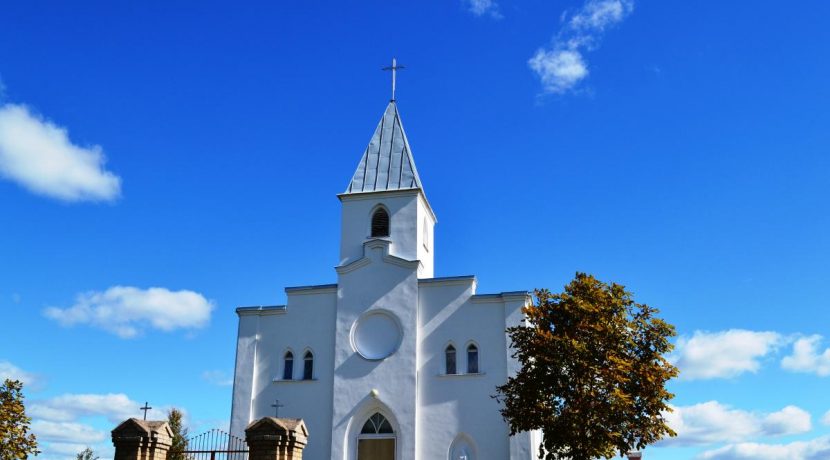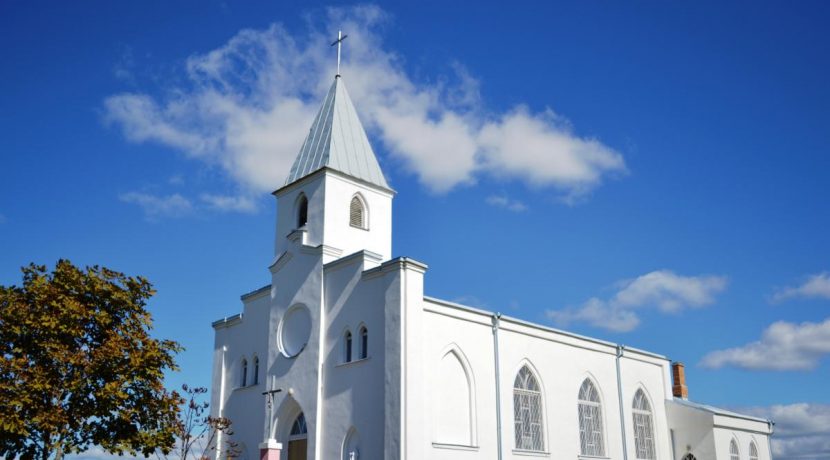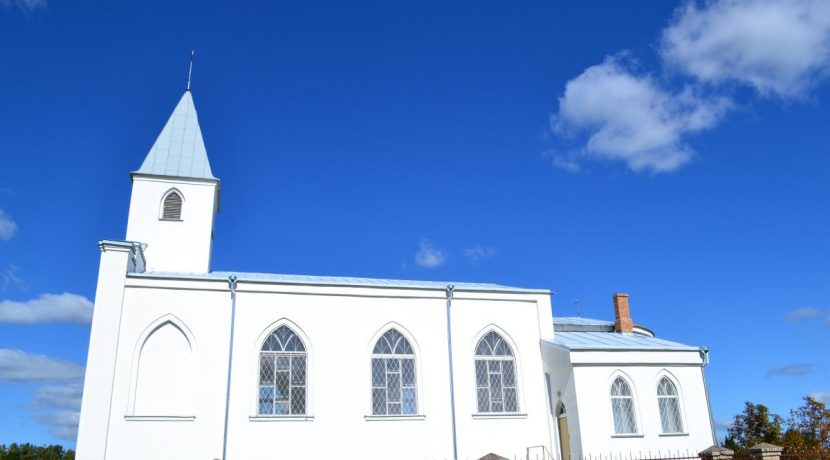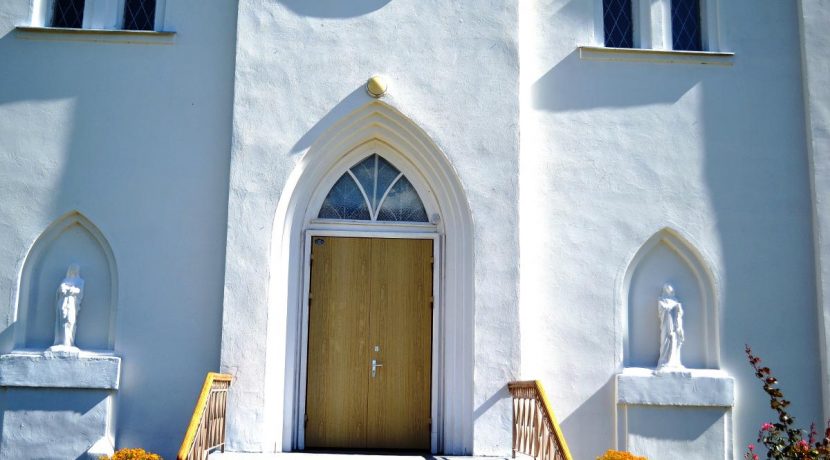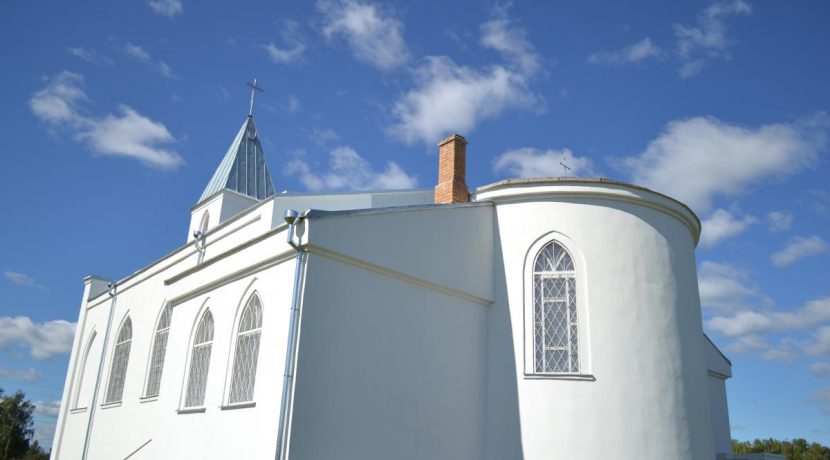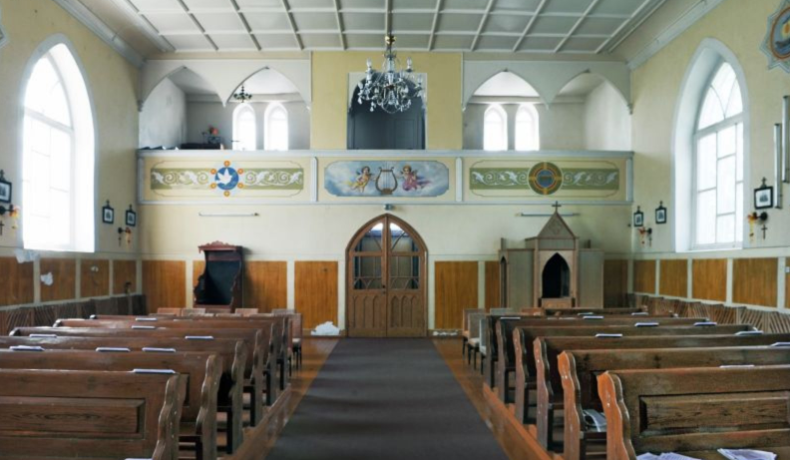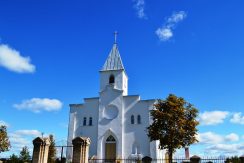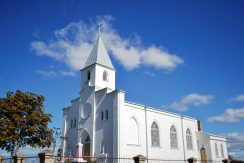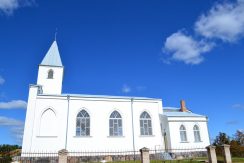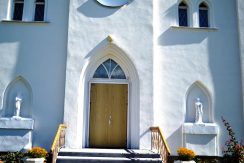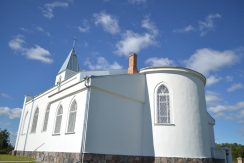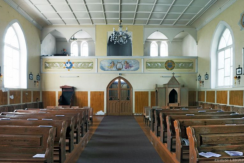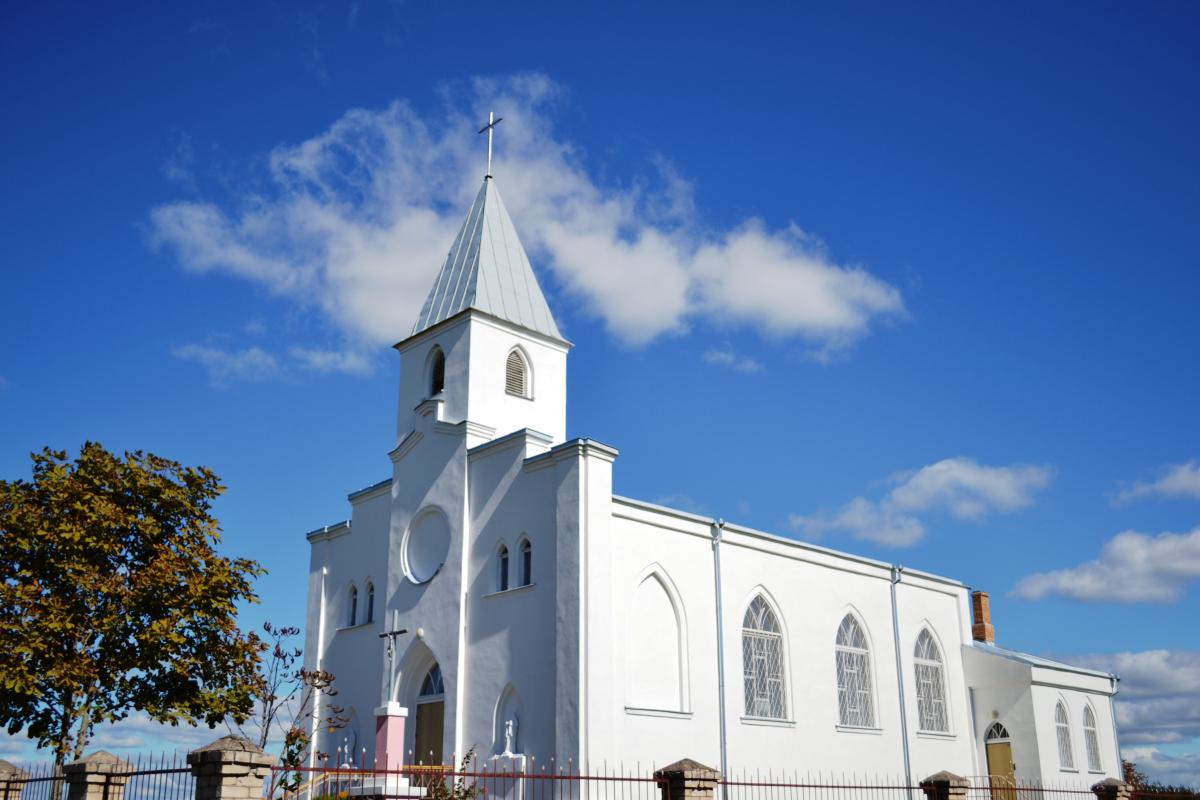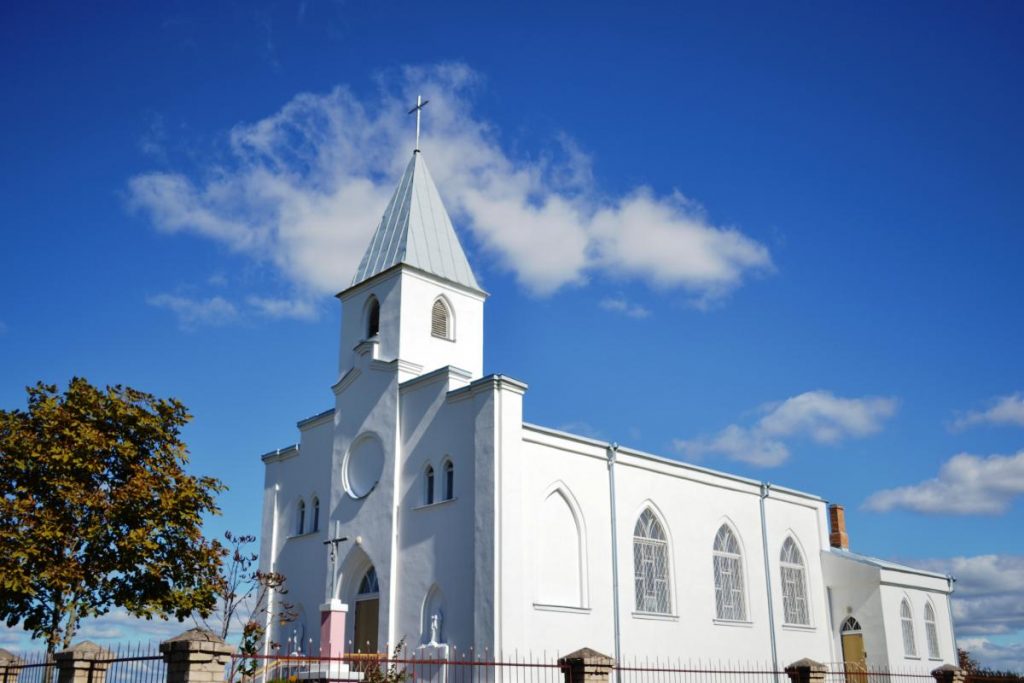Its building was started in 18 September 1932 under guidance of dean M.Voitekunas. World War II stopped the project. In Soviet times there was established entertainment place. Its sacral significance the church regained in 1980s, but completed and consecrated it was in 30 August 1992.
History of the Church:
Near the border of Belarus there is Feldkopas cemetery. In 1874 at the expenses of Karlis Ravics there was built wooden church. The church had 1m high stone foundation that may be seen after the church burnt down. It was devoted to St. Stanislaus and it had his painting on big altar. On one side altar there was the painting of Jesus’ Heart, on the other – the Virgin’s Care. The last painting was saved from fire and passed for keeping to Pāvils Sobolevskis. Now the painting is placed in Demene Church at the right side of the altar.
Feldhofa Church around its garden had 52m long, 40m wide and 1m high stone rampart-fence. It still exists. On the left side from the garden there was Feldhofa cemetery. On the right side there was priest’s house, household buildings and an apple-garden. None of the buildings have remained till nowadays. Near the church in 1900 a parish was established. From 1911 till 1918 here lived dean Juris Martinaitis. The closest station was Drisviati. In time of World War I the church burnt down. The landlord gave timber to parish members for the building of new church. Prepared materials were brought to the burnt church. In front of it was built plank shed where the services were conducted. After the war, when the border of Poland was determined, Feldhofa was situated near the very border in disadvantageous place for many parish members. Therefore dean M.Voitekunas started to establish parish in Demene, 8km from Feldhofa. Here landlord Ptichko presented to the church 3 hectares of his land. Here from Feldholda were brought prepared timber, although the part of parish members objected against it. In Feldhofa left plank shed (temporary church) was abandoned, it wasn’t renovated and soon it collapsed. Now Feldhofa is overgrown with bushes.
In 1928 in Demene was built a cattle-shed, a cellar and a house. In one part of the house was established chapel where the services were conducted. Old Demene church (chapel) was wooden building that owing to care of local inhabitants have remained till nowadays. Present time church (chapel) was built by dean Z.Naglis when he attended parish from Laucesa. The building of Demene church is 16m long, 9m wide and 3m high. It is divided with wooden wall in two parts: in one part that is 11m long and 9m wide there is the church, in the second part (behind the wall) there is the flat of the dean. The foundation is 1m high and is made of concrete. The roof is made of galvanized plate-tin and coloured in 1976. The entrance in the church is in front part of the building, but the entrance in dean’s flat is from the side. Ceiling and floor are wooden. Big altar was brought from Belarus church and it doesn’t have any paintings. Tabernacle is full of woodcarvings. On the left there is the altar. It was brought from Feldhofa. On the right there is only a table and candles. On both sides of the presbytery there are small sacristies. The interior of the building is illuminated by six windows on the sides and two windows in back/front of the church. In the dean’s flat there are two rooms and a kitchen. Around the church there is wire netting fence.
In 18 September 1932 dean M.Voitekunas in Demene started to build new stone church (26m long, 17m wide and 12m high). Its foundation was made of abated stone. In right corner of foundation there is inscripted the year of its building. The church was made of cement bricks and of bricks found in German trenches of World War I. Its building materials were not too expensive. Part of parish members separated, didn’t support building works and went to Silene church. The walls of the church were already built, but there was no roof yet. According the drafts in Latvia Central History Archive the church was planned as Neo-Gothic and very high building with light belfry in its centre. Lancet-arched windows and small gazeboes in the corners of the roof would stress its lightness, volatility and aspiration to reach God’s throne even more. Unfortunately World War II was started and initiated works remained unfinished. Dean M.Voitekunas died in 1944 and was buried near the presbytery of the unfinished church. When the War was over, representatives of Soviet system’s governments decided built walls of the church to use for building of a club. The place meant for prayers turned into the place for holiday activities where the movies were shown and discotheques, ceremonial meetings, socialistic competitions, celebrations in honour of winners were organized. Architectonic plan of the church was violated: in walls there were immured silicate bricks, in the place of the sacristy was established boiler-house, the building from all sides was “girded” with stacks of firewood, the roof was covered with slate plates. In the end of 1980s the church was returned to the parish. In 1992 renovating works were finished, and in 30 August 1992 bishop of Liepaja diocese Janis Bulis consecrated the new building of church in honour of Blessed Jesus’ Heart.
In the parish there worked deans Pekss, Shikur-Kalvani, J.Lapkovskis, Z.Naglis, P.Rudzits, J.Karkle, K.Vitanis, A.Madelans.


